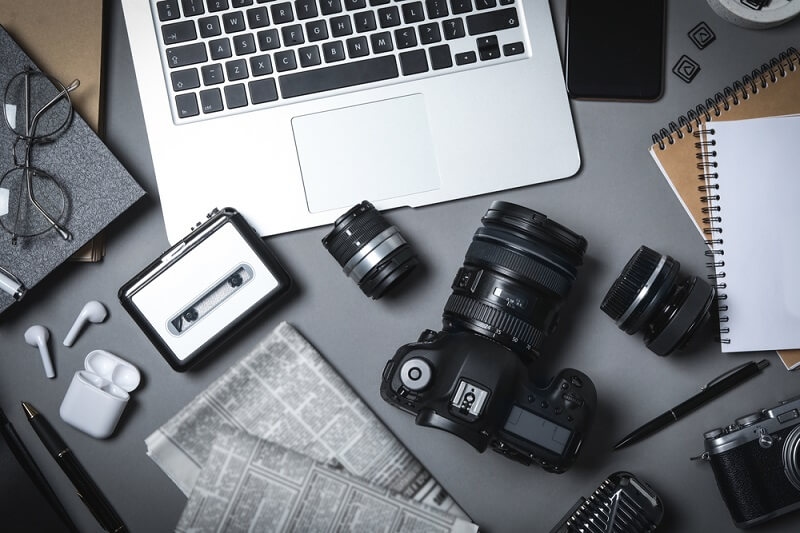
City photography is one of the most exhilarating and challenging types of photography. Unlike landscape or portrait photography, city shots have movement, architecture, light, and people galore. To really capture the essence of a city, whether it be the bridges of Pittsburgh, the skyline of New York, or the narrow streets of old European towns, it will take more than just the right equipment. You need to follow the basics of composition in your photography.
Composition is the basis of every meaningful photograph. It helps the viewer's eye follow around your image, gives the image balance, and transforms a moment in time into something you will never forget. In this guide, we will cover photography composition tips, learn about the rule of thirds, understand simple composition styles, and give you some real-life tips on composing photos as a beginner. We will also include some composition tips for cityscapes or urban environments, whether you are just getting started or building on the basics of Pittsburgh photography.
By the end of this article you will have an improved way of thinking about a lot of concepts and ideas that will help transform your city photographs from flattened and messy images into impactful, engaging photography.
Composition encompasses arranging components in your photo; it encompasses storytelling. In an urban environment, you're often surrounded by chaos: tall buildings, shocked students, neon dazes, busy streets, and reflections in glass city buildings. Without a clear sense of visual organization, these competing elements will add to the confusion, resulting in a photograph with chaos instead of art.
Think of composition as the language of photography. Just as a writer has a set of rules, such as grammar and punctuation, that bring meaning to words, photographers have their own set of rules, which are framing, balance, and perspective, that bring meaning to the visual story. For beginning photographers, learning these composition rules can feel like stepping into a new creative realm.
If there was one thing a beginner should start with, it is the rule of thirds. You can think of the framing of your photograph as being divided into nine equal parts—three rows and three columns. The concept is to place your subject or essential elements along these lines or at their intersections.
For example, if you are taking a photograph of Pittsburgh's skyline from Mount Washington, you would want to keep the horizon along the upper third, as it allows you to emphasize the city of Pittsburgh while still keeping the river or reflections shown below.
Natural lines abound in cities. Streets, bridges, railways, fences, or even rows of lamp posts. These are called leading lines, and they help guide the viewer’s eye through your image.
Using leading lines tends to help create depth or a three-dimensional quality to your photo.

Framing is also an important beginner photo framing technique that provides more interest and context to shots of the city. Instead of just taking a picture of a building by pointing the camera at it, gather and use elements around the subject to build a frame naturally.
Examples:
In Pittsburgh, for example, the arches of the many steel bridges are perfect framing methods for cityscapes and skyline shots.
There is no shortage of patterns in cities—rows of windows, street tiles, reflections in glass, or symmetry created through shapes in architecture. Capturing symmetry or breaking symmetry deliberately can create powerful images.
Reflections in puddles or rivers can really enhance the pattern's impact—this is a classic, if not a hack, for your cityscape composition tips and tricks.
To add depth, consider your photo having three layers: foreground, midground, and background.
Balancing these three layers is one of the most effective landscape and cityscape composition tips.
Cities change dramatically with light. From golden hour to neon nights, how you use light defines your composition.
A strong understanding of light enhances all photography composition tips, turning simple scenes into breathtaking cityscapes.
Colors play a huge role in how your photo feels. Cities are often colorful, with street art, lights, and buildings adding variety.
For example, a splash of yellow from a Pittsburgh taxi against gray steel bridges can make the photo pop.
To master these techniques, try these beginner-friendly exercises:
These exercises are simple yet powerful ways to apply simple composition techniques.
Even with tips at hand, many beginners struggle with:
By being mindful of these, your beginner photo framing skills will improve quickly.
Since Pittsburgh is known for its bridges, skyline, and unique neighborhoods, here’s how to apply these techniques locally:
These Pittsburgh photography basics can be adapted to any city you explore.
The key to composition is not simply learning guidelines and rules—it's about teaching yourself to see balance, movement, and storytelling potential. As you practice the rule of thirds as we talked about, experiment with photo framing with a beginner's eye, and utilize composition tips for cityscapes to develop your skills, you will be able to change your city photos from something that might be considered boring snapshots into new works of art!
Whether you are practicing simple composition methods in your hometownor working on Pittsburgh photography basics for landscape cityscapes, remember that composition is a creative tool to connect your vision to your viewer.
Photography is a journey, and composition is the map. The more you practice, the more it becomes second nature. So grab your camera, go into the city, and learn to see the streets with a capital "C"!
This content was created by AI